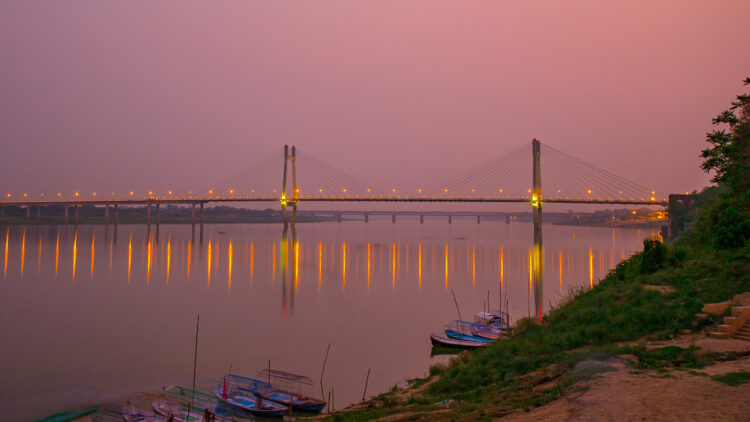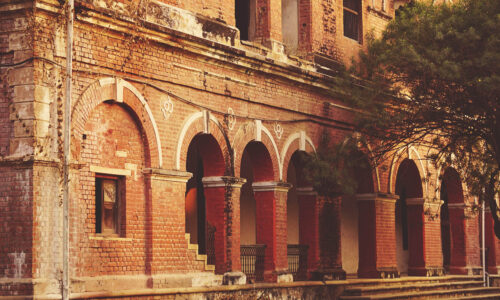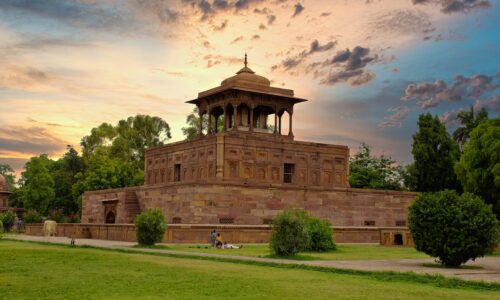Once hailed as the educational and political capital of India, Allahabad is today a mere shadow of its former self. The national politics no longer revolves around Anand Bhawan and people do not flock to catch a glimpse of the Father of the Nation who was a regular visitor to the legendary home of the Nehrus. The University of Allahabad has ceased to produce the galaxy of scholars, poets, scientists and civil servants that has earned it the sobriquet of the ‘Oxford of the East.’ The Allahabad High court no longer has the distinction of having legal luminaries like Sir Tej Bahadur Sapru, Kailash Nath Katju, Kanhiya Lal Misra to name a few. The city’s main market Civil Lines, which was planned by the British in 1858 much before Delhi’s Connaught Place, has lost its pristine glory thanks to the unplanned growth of shopping complexes and high rising buildings. Although the city has passed into a kind of political and intellectual wilderness, it has managed to keep itself in the limelight, occasionally for the right reasons, but mostly for wrong reasons.
The Controversial Renaming of Allahabad to Prayagraj
Needless to say, the unilateral decision of the BJP government to rename the city Prayagraj on 15th October, the birth day of its founder Emperor Akbar (r. 1556-1605), is certainly a wrong reason that has brought the city to the mainstream of national politics. Although the diehard supporters of the BJP have hailed the decision as appropriate and timely, a substantial section of the city’s populace see it as a political stunt intended, hopefully to influence the outcome of the general elections in May 2019. An online campaign is hot on the social media to oppose the move and several thousand people are reported to have signed the petition opposing the name-change. The state government’s claim that by restoring Allahabad’s original name Prayag, it is simply setting right a historic wrong committed by the then Mughal Emperor Akbar is unfortunately not supported by history.
Historical Significance of Prayag and Its Pilgrimage Status
There is no doubt that Prayag (Payag or Jhusi-Payag according to Mughal chroniclers) meaning ‘The place of offering’, situated on the point of the confluence of the sacred rivers Ganga and Yamuna, was a major centre of pilgrimage in ancient times; it continued to be so in the medieval age, and down to our own times. The Rigveda describes it as a sacred Tirtha where the faithful prefer to die in order to attain Nirvana. The epics Ramayana and Mahabharata assert that a bath in Prayag’s holy rivers is enough to cleanse the bather of all sins. The seventh century Chinese traveler Hiuen Tsiang praises it as a flourishing centre of pilgrimage where the Hindus flock to give away their lifetime savings in charity and die by jumping from a great tree (identified by Alexander Cunningham with the legendary Aksyavat tree) into the river.
It is interesting to note that Alberuni, the eleventh century author of Kitabul Hind (The Book of India) has not referred to the town or settlement of Prayag. He has instead alluded to the tree of Prayag, situated at the junction of rivers Ganga and Yamuna, from where “the Brahmans and Kshtriyas are in the habit of committing suicide by climbing up the tree and throwing themselves into the Ganga.” There is no evidence that Prayag was a flourishing centre of trade and commerce in ancient times or that its strategic location was appreciated by ancient Indian rulers. Kausambi in the west and Pratisthana (modern Jhusi) in the East in fact enjoyed much more political clout than Prayag.
Turkish and Mughal Rule in Northern India and Prayag’s Political Status
The founding of Turkish rule in Northern India in the thirteenth century brought no change in the political status of Prayag. Kara (65 km northwest of Prayag) became a centre of political activity when it was designated the headquarter of the newly created Iqta (province) of Kara-Manikpur. It quickly emerged as a flourishing political and commercial centre. In 1394 when the Sharqi kingdom of Jaunpur was established, Prayag and Kara-Manikpur were seized by the Sharqis. At the turn of the sixteenth century, the Afghans held sway in this region and it was from the Afghans that Babur (r. 1526-1530) captured the territory and appointed Junaid Barlas its first Mughal governor. The early years of Akbar’s reign saw hectic political activity in this region. Between 1561 and 1574 the Emperor was obliged to visit Prayag four times to keep the eastern provinces of the empire under control.
Akbar’s Recognition of Prayag’s Strategic Value
During his visit to Prayag in 1574, Akbar seems to have realized its strategic value and decided to make it a military center. Abdul Qadir Badauni, the author of Muntakhab ut Tawarikh, writes that on 14th July 1574 the emperor arrived at Prayag on his way to Patna from Agra and laid the foundation of an imperial city, which he called Ilahabas. Farid Bhakkari, the author of Zakhirat al-Khawanin, writes that in the year 1574 Akbar visited Jhusi-Parag and laid the foundation of Ilahabas Fort. Another celebrated Mughal chronicler, Nizamuddin Ahmad concurs with the above two versions of the foundation of the city. He adds that Himmat Ali was the architect of the Fort (the locality in modern Allahabad known as Himmat Ganj was probably named after the architect).
Historical References to Ilahabad and Ilahabas
Abul Fazl, writes in Akbar Nama that in accordance with his “desire to found a great city in the town of Piyag which is regarded by the people of India with much reverence and to build a choice Fort there” the Emeror laid the foundation of the city of Ilahabad in 1583. Yet he has also stated that it was in 1579-80 when it was designated the headquarters of the Subah of the same name the town was already known as Ilahabad.
Badauni’s observation is that in 1583 the Emperor went on a pleasure trip to Ilahabad “which is a new creation on the site of Prayag,” several buildings had already been constructed there. Thus it would seem that the foundation of the fort and city was laid in 1574 and it was at that time that the city was named Ilahabad. Nine years later the Emperor visited the site again, stayed for four months and began constructing other buildings within the Fort complex under his own supervision.
Needless to say, each and every Mughal chronicler has acknowledged the profound sanctity of Prayag situated on the confluence of Ganga and Yamuna and has referred to the massive crowd that assembled there on festive occasions. Perhaps it was because of the inviolable sacntity attached to the site, and also its strategic location that Akbar decided to build a new city and an imposing Fort here. It must be noted that all Mughal chroniclers have used the term Jhusi-Payag / Jhusi Parag to describe the holy place. It can therefore be surmised that the Jhusi situated opposite the confluence of the two rivers was the ancient settlement of Prayag. The conclusion is obvious that Prayag was not renamed Ilahabad by Akbar; it was a brand new city that took very little time in developing into a bustling administrative and military centre.
Jahangir (r. 1605-1627), in his autobiography, has also designated it both Ilahabad and Ilahabas. Even the coins issued from the city’s mint on different occasions have Ilahabad and Ilahabas as the place of their origin. The foreign travellers, Bernier, Tavernier, De laet, Peter Mundy etc., Visiting the city in the seventeenth century invariably call it Ilahabad. The city was therefore known as both Ilahabad and Ilahabas and the contention of some modern scholars that Shahjahan (r.1628-1657) gave the city its name of Allahabad is not based on historical facts. Saligram Srivastava’s suggestion that “the name was deliberately given by Akbar to be construed as both Hindu (Ilaha meaning the gods) and Muslim Allah” seems to be closer to truth. During the British rule Ilahabad was spelled as Allahabad which remains in circulation even today.
In part 2, of this article, we will talk about some important historical monuments of Allahabad.
This article was originally published in The Indian Express on October 28th, 2018. The link to the article is – https://indianexpress.com/article/express-sunday-eye/once-upon-a-time-in-prayag-5420922/



